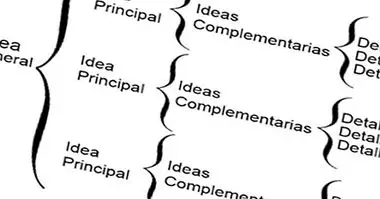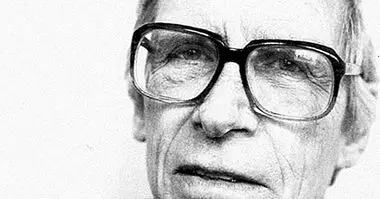The 8 characteristics of a monograph
It is probable that throughout our lives we need to document more or less extensively on a specific topic, be it in the face of doing some kind of academic or work task or to solve a problem about which we have limited knowledge, or because just curiosity. For it we can resort to a lot of information sources .
In fact, there are so many possible sources that talk about the same subject and describe different aspects of it, sometimes in such a way that they seem to refer to different elements, that it would be possible for us to get lost in an infinity of articles, documents or various files. Fortunately we can resort to monographs, a type of text that systematically collects information on the same subject. What are they? What are the characteristics of a monograph? Let's see it throughout this article.
- Related article: "21 books of Social Psychology of forced reading"
What is a monograph?
In order to see the main characteristics of the monographs in the first place, it is important to define what they are, since many of their most distinctive features are already visible in their definition.
We understand by monograph all that text or document that collects and synthesizes the available information regarding a specific topic.
It is a synthesis that can be more or less extensive and usually carried out by one or a few authors from the collection of information obtained from various sources , establishing itself as a document specialized in the subject dealt with and that usually aims to serve as an investigation of the "state of the art" or the situation of the knowledge on that subject. Its objective is usually to collect and synthesize existing information as well as adding new information or points of view on the subject.
The monographs are not made randomly, but have a specific and logical structure in which present the available information, organize it and discuss it without this mediating the personal opinion of its author (although the writing may be biased by that opinion).
There are very different types, although usually they are usually either compiled from other sources or from research to provide new information. There are also analyzes of experiences, although these are usually somewhat more subjective.
Although the term monograph may seem unusual, the truth is that in the academic field, these documents are often made , as for example in the final works of degree or masters or the doctoral theses, and even in simpler works elaborated like task during the studies. Of course, the work must be based on knowledge already existing and carried out with a critical spirit, not being a mere personal opinion without anything to support it.
- Maybe you're interested: "How to quote a book with APA regulations, in 9 steps"
Main characteristics of the monograph
Although most of the main characteristics of the monographs have been seen in the previous point, we are going to make them more explicit by commenting them separately.
1. Requires choosing a topic or problem
As we have said the monograph is a text focused on a specific topic, which is based on the whole document. In fact, that is why we speak properly of monograph. By this we mean that it is necessary to delimit an issue or problem of which the monograph in question is going to be, since otherwise we could meet with ramblings that do not lead to a better understanding of the phenomenon or element treated and could induce us to errors or interpretations.
2. Variable design and extension
The extension of a monograph does not depend on the fact that it is such, but on the type of monograph that we perform, the number of sources consulted, what is intended with its realization or even the characteristics of the subject itself. Of course, it is usually intended to make a synthesis of knowledge, not a reproduction of it as such.
In any case it is about something that must be designed and delimited previously , not leaving it to chance but pre-meditating and delimiting in advance what we intend to do. Thus, one of the first steps will be to design and propose how we want the monograph in question to be.
3. Systematization of existing knowledge
The content of the monograph is not based on assumptions or opinions, being necessary first of all to take into account that you will have to gather a large amount of information in advance, always looking for it to be as reliable as possible. We should try that at least part of our sources are from prestigious authors and magazines and recognition in their sector (since it is assumed that the articles written in them must have undergone a harsh screening in order to be published in it). For example, we can search for journals with a very high impact factor.
4. Pretend to be objective and impartial
One of the main characteristics of a monograph is that it seeks to gather the existing information on a subject by reflecting it objectively and without making judgments about its content.
Likewise, it is not only about being objective but about being impartial: a good monograph should reflect all or most of the information available from the sources collected, regardless of one's own positioning or opinion. We must also pick up what we do not agree with. , in case of dealing with a controversial phenomenon, reflect the different existing points of view.
Unfortunately and despite this, it is common that there may be biases based on the formation, orientation or pretension of the author when making the monograph (and even the information that is collected and that may not have to do with what the author claims), may be these intentional or even unconscious.
5. Clarity and without ambivalence
It is important to keep in mind that we are making a synthesis of the existing information on a specific topic, being necessary that the writing of the same be clear and understandable . So we must reduce the ambivalence and use an appropriate language for the target audience of the monograph in question.
6. They have a basic structure and determined internal organization
The monographs have a specific structure through which organizes the information you want to present. Of course, we are talking about a basic structure, some monographs may be complicated or vary depending on the type of monograph that is being carried out.
Generally, we find throughout the monograph a brief initial summary regarding the content (as well as keywords), an introduction or presentation of the data and the reference frame used , a body or development of the data (in which in the case of experiments or research processes will also refer to the methodology and results found), a discussion or elaboration of the meaning of the set of information previously expressed, some conclusions and finally a dedicated section mention the bibliography used for its preparation. Optionally we could also find annexes.
7. Mostly they try to contribute
It is true that there are compilation monographs whose objective is only to systematize existing knowledge, but as a general rule research is the most frequent type of monograph. In this case, it is important to keep in mind that it will not only be about explaining what is known about a topic, but also about you should try to contribute something to that knowledge , with a critical vision, or incorporating new knowledge derived from experimentation.
8. References and appointments
An important part of our work when preparing a monograph is to take into account the importance of assessing and reflecting the sources from which we started. This allows a recognition to the ideas and concepts of the original authors of the information from which we started, and secondarily they also allow to give more credibility to the monograph in question.
For this it is essential to use bibliographic references, as well as cite the authors when mentioning their theories . When your content is copied literally, it will be necessary to quote the fragment and italicize it in addition to quoting it.
Bibliographic references:
- De Cores, S. and Valenzuela, C. (2015). Guide for the presentation of the postgraduate monographs: a contribution from the library of 'Faculty of Medicine, University of the Republic. National Documentation and Information Center in Medicine and Health Sciences; Montevideo.
- Espinoza, N. and Rincón, A. (2006). Instructions for the preparation and presentation of monographs: the vision of the Faculty of Dentistry of the Universidad de los Andes. Venezuelan Odontological Act, 44 (3). Caracas.



















